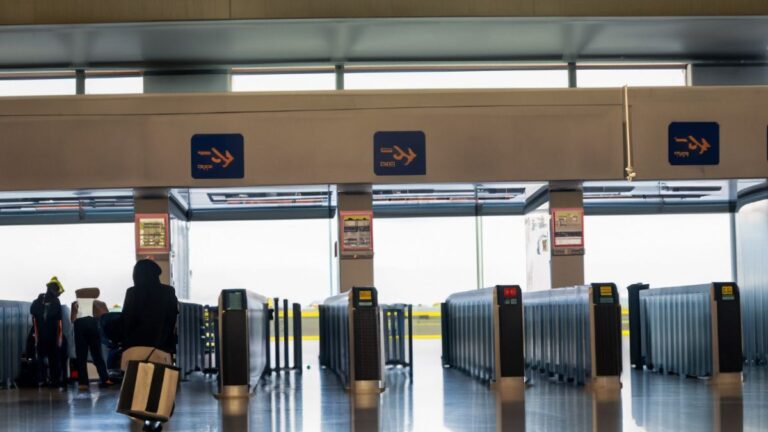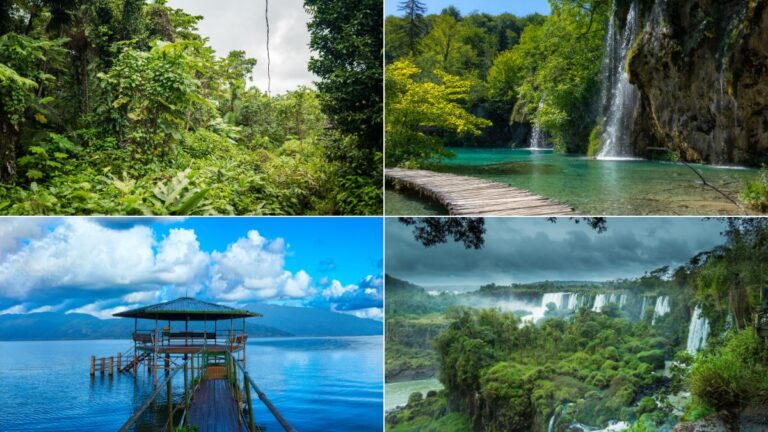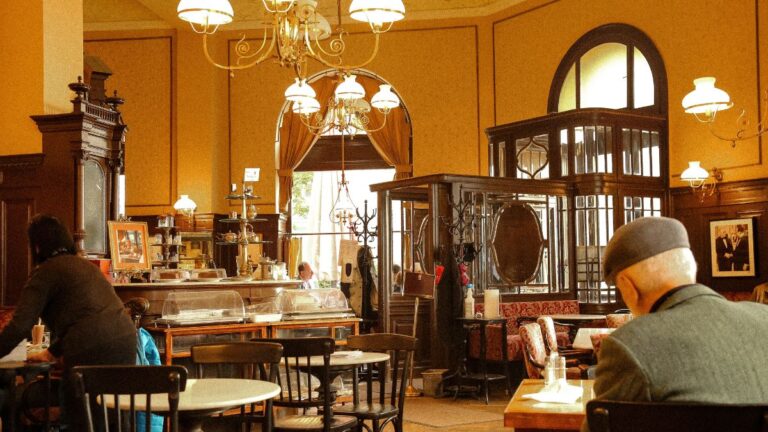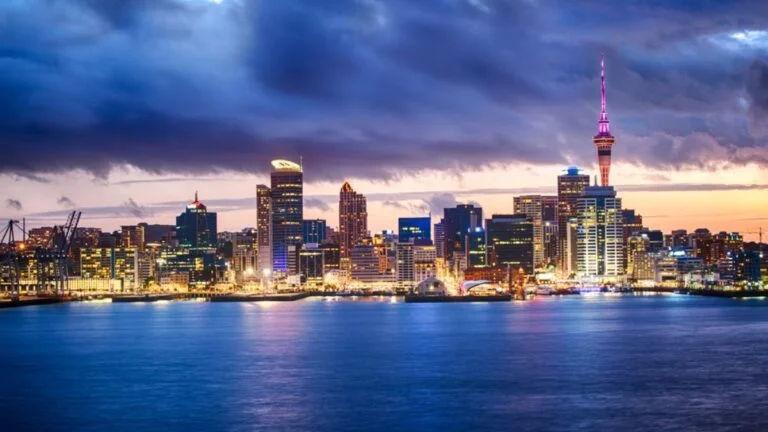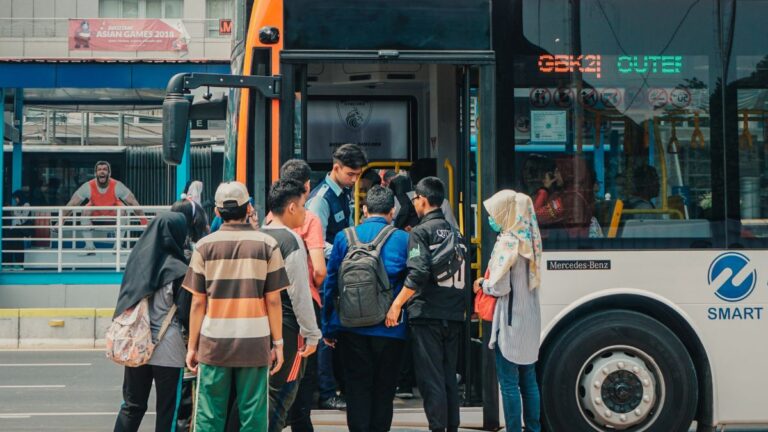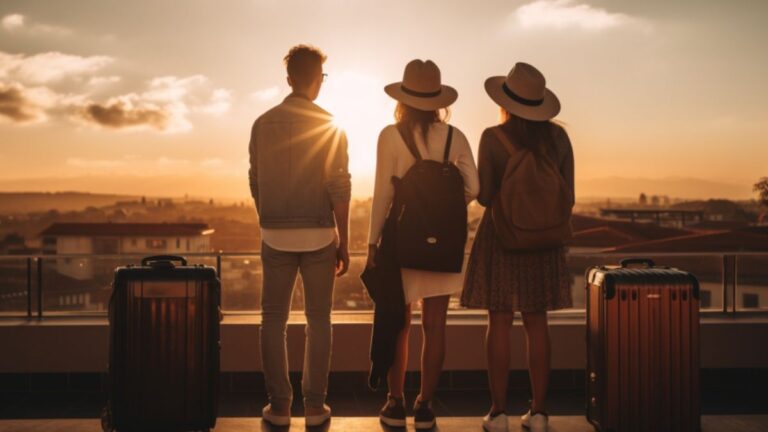Worst Time to Visit Barcelona: Decoding the City’s Seasonal Disadvantages
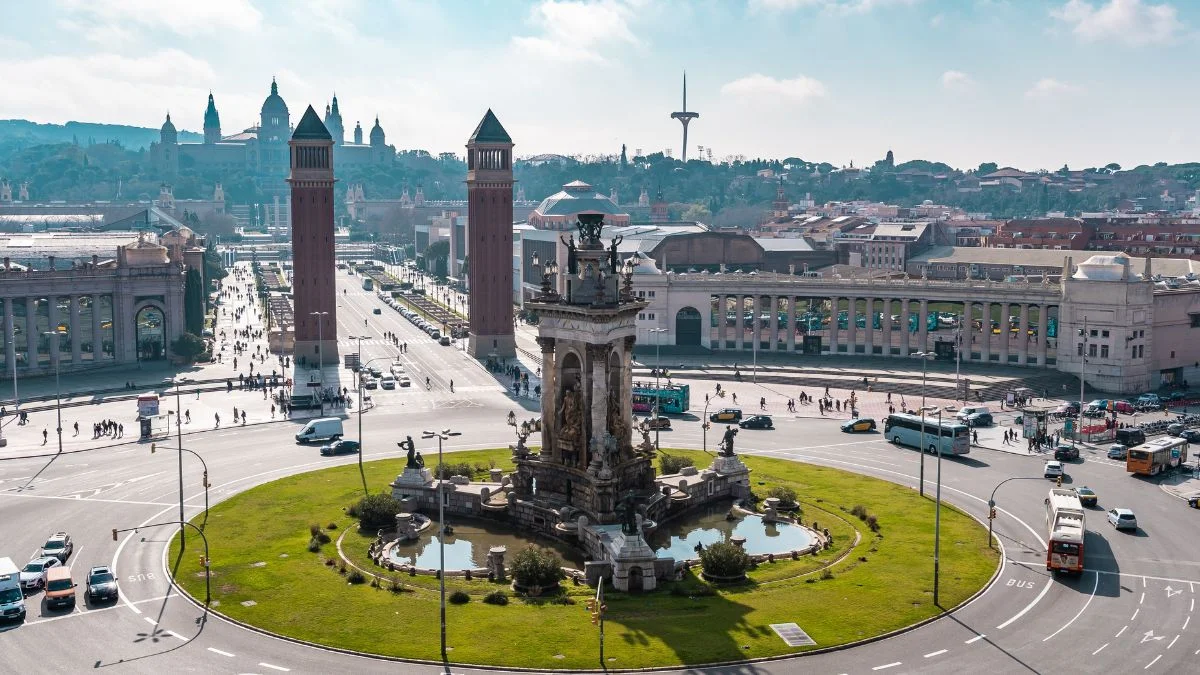
As participants in Amazon Associates and other programs, we earn from qualifying purchases. This comes at no additional cost to you. For more details, see our Affiliate Disclosure.
When you think of Barcelona, visions of sun-soaked beaches, stunning architecture, and bustling plazas might flood your mind but like any city in the world, it has its off times too. The vibrant energy of the city hides a less glamorous side that often goes unnoticed by the throngs of tourists eager to revel in its beauty.
In this article, we’ll delve into the less appealing aspects of the Catalonian capital during different seasons, and why they might make certain times of the year the worst to visit Barcelona.
The Overwhelming Summer Crowds
Summer is usually the peak season for tourism in Barcelona, which means the city gets inundated with visitors from around the globe. With temperatures soaring to a comfortable 28-30°C (82-86°F), it’s a popular time for beach lovers and sun-seekers. However, the surge in tourists can lead to overcrowded attractions, long queues, and bustling streets, detracting from the peaceful, easy-going Mediterranean vibe that Barcelona is known for.
The emblematic Sagrada Familia, Parc Guell, and the Gothic Quarter become especially packed, making it difficult to fully appreciate their architectural beauty amidst the throngs of people. Moreover, the renowned La Rambla, a pedestrian boulevard famous for its street performers, restaurants, and market stalls, can become almost impassable.
Beaches like Barceloneta, popular for their golden sands and crystal-clear waters, often become so crowded that finding a spot to lay your towel can be a challenge. Not to mention, the high number of tourists can lead to an increase in prices for everything from hotel rooms to sangria, making your trip significantly more expensive.
While summer has its charm, with long sunny days and vibrant nightlife, the overcrowded venues and high prices might make it a less desirable time for those who seek a tranquil, more authentic Barcelona experience. If you’re not fond of large crowds and would prefer a more relaxed trip, you might want to consider visiting Barcelona during the off-peak seasons.
The Winter Blues: Barcelona’s Less Sunny Side
Barcelona, best known for its sunny skies and warm Mediterranean climate, tends to get a bit gloomy during the winter months. From late December to early March, the city sees an increase in rainfall and a drop in temperature. While Barcelona’s winter is relatively mild compared to many European cities, with temperatures hovering around 10-15°C (50-59°F), it can still feel chilly, especially in the evenings.
The less inviting weather can make it harder to enjoy some of the city’s top attractions. Outdoor activities, such as beach visits, park picnics, and strolling down the beautiful streets can be less pleasant, with sudden rain showers often catching visitors off guard. The shorter daylight hours might also limit your sightseeing plans, as you’ll have less time to explore the city during daylight.
Moreover, many of the city’s eateries and shops, particularly those in coastal areas, reduce their hours or even close down for the winter. This can limit your dining and shopping options, and you may miss out on the bustling energy that typically characterizes Barcelona’s streets and squares.
However, winter isn’t all doom and gloom in Barcelona. There are fewer tourists, which means fewer lines at major attractions, and you can often find lower prices for flights and accommodations. Plus, there’s something uniquely charming about seeing Barcelona’s famous landmarks, like the Sagrada Familia and Park Güell, adorned in winter’s soft light.
Festivals Turned Frenzies: Barcelona’s Peak Event Times
Barcelona is a city known for its lively festivals and cultural events, which add to its vibrancy and charm. However, these special events often attract vast crowds, turning peaceful celebrations into frenzied gatherings.
One of the city’s biggest events is La Mercè, a week-long festival in September that honors the Patron Saint of Barcelona, Our Lady of Mercy. This celebration is packed with exciting activities, from human towers (castellers) to incredible firework displays. While it’s a fantastic display of Catalan culture, it also attracts hundreds of thousands of participants, making the city exceptionally crowded and noisy.
Another significant event is the Sonar Music Festival in June. It draws music lovers from around the world, leading to overcrowded public transport and accommodation shortages. While it’s a paradise for electronic music enthusiasts, the sheer volume of people can be overwhelming for others.
Barcelona’s famous FC Barcelona soccer matches are also a magnet for sports enthusiasts worldwide. While these events bring an infectious energy, they also create significant traffic, crowd buildups, and often result in booked-out hotels.
While these events are part of what makes Barcelona unique and lively, they can add to the city’s congestion. If peace and relaxation are high on your travel priorities, it would be worth checking the city’s event calendar before booking your trip to avoid coinciding with these frenzied festivals and matches.
Rainy Days in Autumn: A Dampener to Your Barcelona Adventure
Autumn in Barcelona, spanning from late September to December, can be a mixed bag when it comes to weather. While the beginning of the season may still carry over the warmth from summer, the latter part is often characterized by increased rainfall and cooler temperatures.
October and November are particularly known for their unpredictable showers. This rainfall can put a damper on your outdoor plans, making visits to Barcelona’s beautiful parks, such as Park Güell and the Montjuïc area, less enjoyable. The city’s beautiful beaches also lose their charm as the temperatures dip and clouds often cast a gray over the usually vibrant cityscape.
A common occurrence during these months is sudden rain showers. Even on days that start off sunny and bright, the weather can quickly change, leaving unprepared visitors caught in the rain. This can make planning your itinerary tricky as you’ll have to account for potential weather changes.
On the flip side, the autumn season can provide a more authentic glimpse into Barcelona’s daily life. As the summer tourists depart, the city regains its local flavor. The streets become less crowded, and attractions are easier to access. Plus, the changing foliage in the city’s parks and the cooler weather can provide a unique aesthetic to the city.
However, if you’re planning to visit Barcelona for its sunny beaches and outdoor activities, the rainy autumn days might not be the most ideal time for your visit.
The Sea’s Icy Stare: Beaches During Off-Season
Barcelona’s beaches are undoubtedly some of the city’s top attractions. From the bustling Barceloneta beach, dotted with bars and cafes, to the quieter Nova Icaria, they are the epitome of the city’s laid-back Mediterranean vibe. However, during the off-season, these sandy paradises undergo a significant transformation.
From late autumn to early spring, the temperature in Barcelona drops significantly, making the water too cold for a comfortable swim. Although the city enjoys milder winters compared to many other European destinations, sea temperatures can dip to about 13°C (55°F) or lower. This chilly water, combined with the often overcast skies, means beach days are typically off the cards during these months.
Even the most popular beach, Barceloneta, known for its vibrant atmosphere, water sports, and inviting beach bars, loses much of its allure. Many waterfront businesses close or limit their hours, and the lively beach scene makes way for a more subdued ambiance. This can be a disappointment for visitors hoping to experience Barcelona’s famed beach culture.
However, these quieter times offer a different perspective on Barcelona’s coastal areas. The tranquility of the deserted beaches, the calmness of the sea, and the opportunity to stroll along the waterfront without the summer crowds can be uniquely appealing. But if a dip in the sea and lively beach atmosphere are central to your Barcelona experience, you might want to avoid visiting during the off-season.
Off-Peak Attractions: The Upside to Barcelona’s Low Season
While certain times of the year may present disadvantages in terms of weather and crowds, there are undeniable benefits to visiting Barcelona during its off-peak season. Despite less favorable weather conditions and some businesses operating on reduced hours, the city offers a unique charm in the quieter months that can make your visit worthwhile.
One of the most significant advantages of off-peak travel is the reduction in tourist crowds. The city’s iconic attractions, like Sagrada Familia, Park Güell, Casa Batlló, and the Picasso Museum, are much less crowded, allowing for a more intimate experience. Gone are the long queues and packed spaces, replaced by shorter wait times and the opportunity to explore at your own pace.
Travel and accommodation costs also see a dip during these less busy periods. Airlines and hotels often offer attractive discounts, which can make your trip more economical. Restaurants and cafes are less busy, too, offering a more relaxed dining experience.
Furthermore, despite the occasional closures, the majority of Barcelona’s cultural offerings, including its museums, art galleries, and historical sites, remain open all year round. The city’s indoor attractions, such as its world-renowned food markets like Mercat de Sant Josep de la Boqueria, are also unaffected by the weather.
Additionally, the city’s calendar is packed with cultural events, even during the off-peak season. From the Santa Eulalia Festival in February to the Jazz Festival in November, there’s always something happening in Barcelona.
In short, while the off-peak season might not be the best time for beach-goers or outdoor enthusiasts, it can offer a more authentic, relaxed, and affordable Barcelona experience for those willing to embrace it.
Navigating Transport Woes in High Season
During Barcelona’s high tourist season, specifically the summer months and festival times, the city’s public transportation system can become a challenge to navigate. The influx of visitors, combined with locals commuting, can lead to packed buses, metros, and trams, making travel within the city less comfortable.
The Barcelona Metro, although extensive and typically efficient, can become crowded, especially during peak hours and on routes that connect to major attractions like Sagrada Familia, Park Güell, and the Gothic Quarter. Queues for tickets can also be long, and you may find yourself spending a considerable amount of time just waiting to board.
Similarly, the city’s buses and the famous Barcelona Bus Turístic, a popular choice for sightseers, see an increase in passengers. This can lead to longer wait times at bus stops and less space on the buses themselves. Even taxis and ride-hailing services can be harder to come by due to the increased demand.
Additionally, traffic congestion intensifies during these peak periods, especially around popular tourist sites and during large events like FC Barcelona matches or major festivals. This can lead to longer travel times and potential delays.
While Barcelona’s public transport woes during high season can be inconvenient, there are ways around it. Consider investing in a travel card for unlimited travel, avoid peak hours where possible, and consider alternative modes of transport like biking or walking for shorter distances. However, if comfort and convenience are a priority, visiting during off-peak seasons might be more enjoyable.
Accommodation Price Hikes: The Hidden Cost of Barcelona’s Popularity
Barcelona, as one of the most visited cities in Europe, sees a significant fluctuation in accommodation prices based on the season and demand. During the peak tourist season in summer and around major events or festivals, accommodation costs can skyrocket due to the influx of visitors.
Hotels, hostels, and holiday rentals in popular areas such as Eixample, Gothic Quarter, and El Born often raise their prices during these high-demand periods. The increase can be quite significant, with costs often doubling or even tripling compared to off-peak seasons. This price hike applies to all types of accommodation, from budget hostels to luxury hotels.
Even in less touristy neighborhoods, prices can surge due to the overflow of tourists seeking more affordable options. And it’s not just the cost that could be a potential issue; availability also dwindles during these periods. The most desirable properties, particularly those with sea views or proximity to popular attractions, often get booked out months in advance.
Moreover, during high season, some accommodations enforce minimum stay requirements, which can limit the flexibility of your travel plans. Others may be more stringent with their cancellation policies during these busy times, adding another layer of potential inconvenience.
Planning your stay well in advance and securing your booking before the rush can help mitigate these issues. Alternatively, traveling during off-peak seasons can lead to significant savings and more options when choosing where to stay. So while Barcelona’s allure is undeniable year-round, the cost and availability of accommodations during peak times are essential factors to consider when planning your visit.
The Shuttered Streets: Siesta Time in Barcelona
Barcelona, like many cities in Spain, has a longstanding tradition of siesta. This mid-afternoon break, typically from around 2 pm to 5 pm, can often come as a surprise to tourists, as many shops, small businesses, and even some tourist sites close their doors during this time.
During siesta, the bustling city takes a pause. Many family-owned businesses, smaller shops, and eateries shutter up, as locals retreat for a leisurely lunch and sometimes a quick nap. For visitors unaccustomed to this cultural practice, it can be somewhat disorienting to find the vibrant city streets suddenly quiet and many places temporarily inaccessible.
This is particularly noticeable in less touristy neighborhoods where local customs hold strong. While the city center and major shopping districts largely cater to continuous tourist footfall, the quieter residential areas of Barcelona adhere to this traditional schedule. So if you’re planning to explore the lesser-known parts of the city or do some shopping in local stores, it’s crucial to plan around siesta time.
While the concept of siesta might disrupt your afternoon plans, it also presents an opportunity to immerse in the local culture. This could be the perfect time for a leisurely Spanish lunch, a peaceful stroll in a park, or even a quick rest in your accommodation, following the local custom.
Nevertheless, the quietened streets during siesta, especially if unexpected, might not appeal to all tourists and should be a consideration when planning your visit to Barcelona.
Essential Tips to Make the Most of Your Visit During Off Times
Visiting Barcelona during off times can offer unique experiences and benefits, but it requires some strategic planning to make the most of your visit. Here are some essential tips:
- Plan for the Weather: If you’re visiting in the cooler or rainier months, be sure to pack appropriate clothing. Comfortable waterproof shoes, warm layers, and a reliable umbrella can make exploring the city much more pleasant.
- Check Opening Times: Many attractions and businesses adjust their hours during off-peak seasons, and siesta can impact afternoon plans. Before setting off, confirm the opening hours of the places you plan to visit.
- Embrace Indoor Activities: Make the most of Barcelona’s wealth of indoor attractions, from its myriad of museums, art galleries, to its famous market, La Boqueria, or the beautiful Palau de la Música Catalana.
- Stay Flexible: The weather can be unpredictable, especially during autumn and winter. Keep your plans flexible so you can switch around your activities depending on the day’s forecast.
- Book in Advance: Even during off-peak times, popular attractions like the Sagrada Familia or the Picasso Museum can get busy. Booking tickets online in advance can save you from long queues.
- Enjoy the Local Cuisine: Some of Barcelona’s most famous dishes, like Escudella i Carn d’Olla, a hearty meat and vegetable stew, are particularly enjoyable during colder months.
- Explore Lesser-Known Areas: With fewer tourists around, off-peak times can be a great opportunity to explore Barcelona’s less touristy neighborhoods and discover hidden gems.
- Leverage Lower Prices: Make the most of off-peak travel discounts. From flights to accommodations, you can find great deals during these less popular times.
With careful planning and a flexible attitude, you can turn Barcelona’s off times into an unforgettable travel experience, full of authentic cultural experiences, quieter attractions, and unique perspectives of the city.

